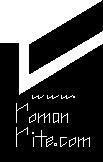| <<Previous |
Incense
104. According to IG 276, the use of incense is optional at
any form of Mass:
a. during the entrance procession
b. at the beginning of Mass to incense the cross and altar
c. at the Gospel procession and before it is proclaimed
d. at the preparation of the gifts, after the bread and wine
are placed on the altar
e. at the showing of the host and chalice after consecration.
105. If incense is used, the priest puts some in the thurible before the procession begins and blesses it with the sign of the cross, without saying anything (IG 120). The thurifer leads the entrance procession. After the priest kisses the altar, if incense is used, he incenses the cross and altar. (IG 123).
106. When the cross is on or beside the altar, it is incensed before the altar, with three swings (IG 277). Otherwise the cross is incensed when the priest passes in front of the cross.
107. According to the Latin, for the altar, single thrusts are used "singulis ictibus". For the cross there are three swings "tribus ductibus". The unapproved English translations of Caeremoniale Episcoporum and Institutio Generalis - CB and IG - use the term "swing" to translate both "ictibus" and "ductibus". So it seems more accurate to translate "ictibus" as "thrust" and "ductibus" as "swing".
108. According to IG 277, the altar is incensed with single
thrusts of the thurible in this way:
a) If the altar is free standing, as the priest walks around
it.
b) If the altar is not free standing, as the priest walks first
to the right side, then to the left.
109. Relics and images exposed for public veneration are incensed with two swings "at the beginning of the celebration, at the moment when the altar is being incensed" (IG 277).
110. For Mass with a deacon, the deacon assists the priest in placing incense in the thurible and incensing the cross and the altar (IG 173). This occurs after the altar has been kissed.
111. More detailed instructions for using incense are given in CB, which apply in a Mass with a bishop if incense is used.
112. When carrying the thurible, it is held in the right hand, with the thumb in the ring at the top, the middle finger holds the chain so the cover is raised, and the boat is carried in the left hand. (CB 74, footnote 66).
113. To give the thurible to the bishop, either one or two acolytes go to the bishop with the thurible and boat. If one goes, he carries the thurible in the left hand with the boat in the right. The deacon takes the boat and presents it to the bishop who adds the incense to the thurible. After the blessing, the deacon returns the boat to the acolyte and takes the thurible from him. He hands the thurible to the bishop placing the top of the thurible chain in the bishop's left hand and the thurible end of the chain in the bishop's right hand. (CB 90).
114. For Mass with a bishop it is made clear that "Relics and images exposed for public veneration are incensed after the incensation of the altar" and that they are only incensed at the beginning of the celebration. (CB 95).
115. According to CB 86, incense should be used at the Stational Mass of the bishop. There is a surprising difference for the Stational Mass regarding who adds incense. According to CB 131, "If necessary, fresh incense is placed in the censer by an acolyte". However IG 173 has the deacon assisting the priest in adding incense. It seems that for Mass without a bishop, incense is added by the priest after the altar is kissed (following IG 173). But for Mass with a bishop the incense is only added when necessary, and then by an acolyte (following CB 131).
116. For the Stational Mass it is made clear that when the bishop incenses the altar and cross he is accompanied by the two deacons assisting him (CB 131).
| <<Previous |
Copyright J.R. Lilburne, 18 March 2002. Last updated 15 April 2002.
